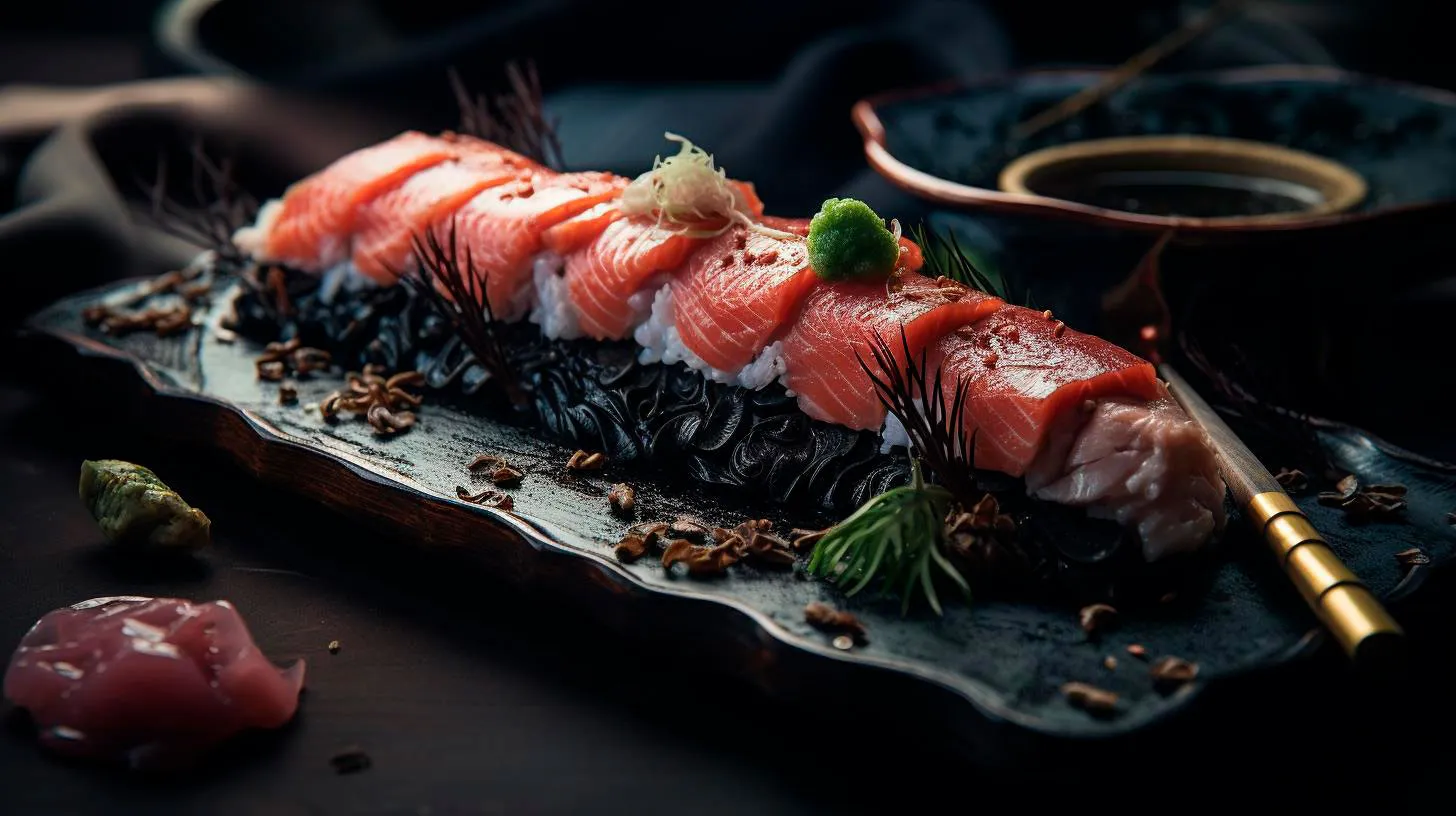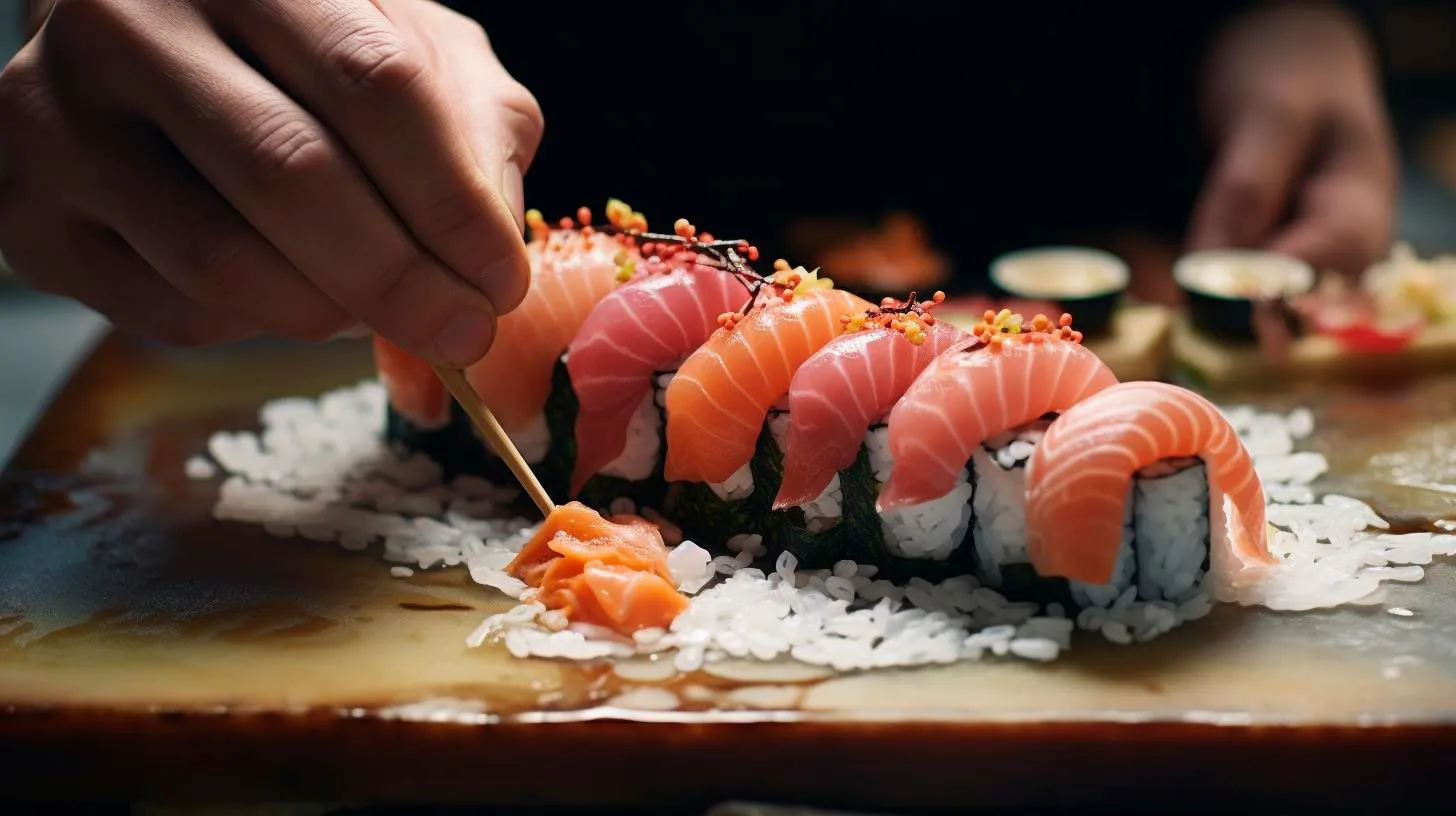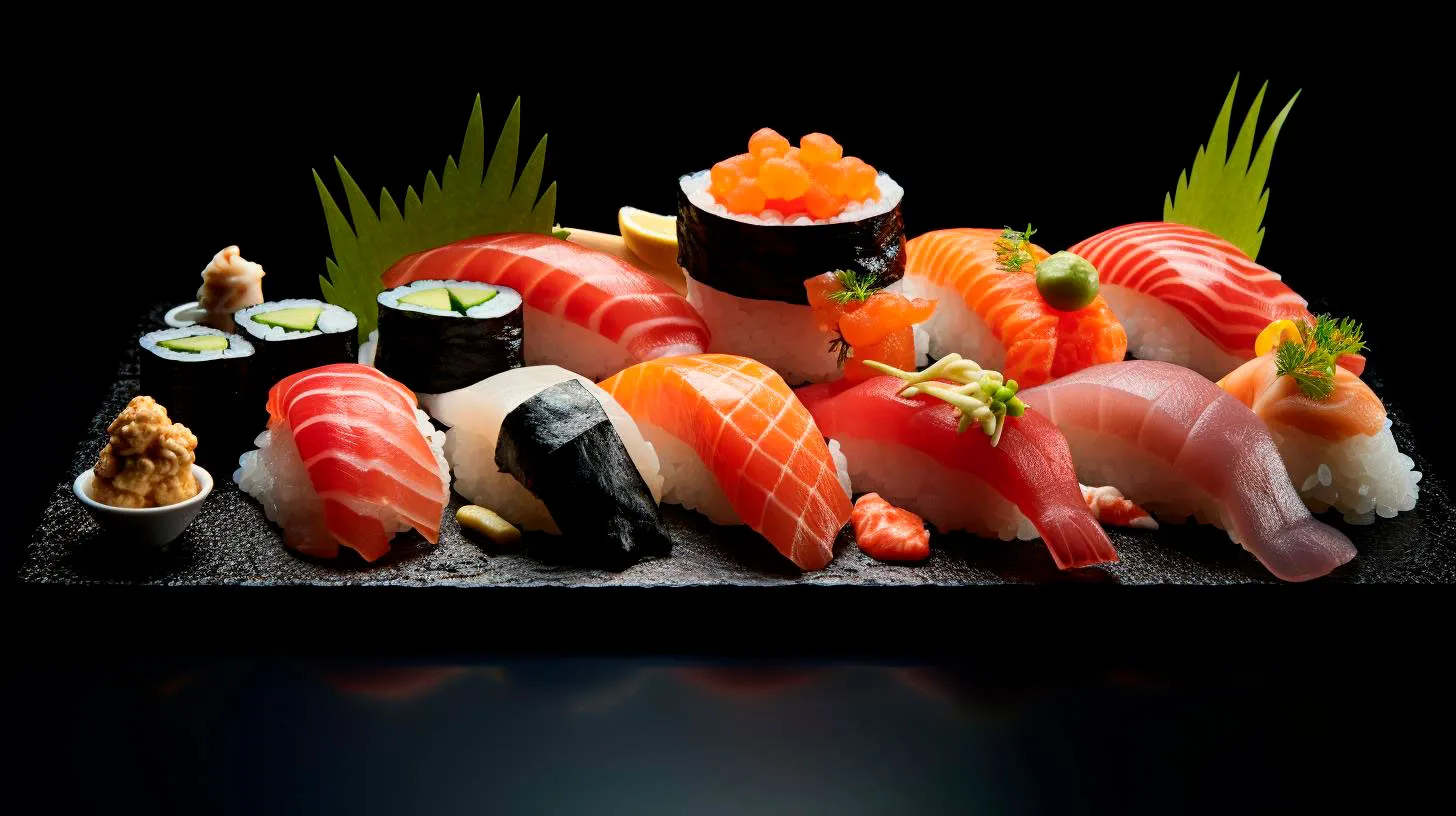The Art of Dining: Unveiling the Creative Concepts behind Pop-Up Food Experiences
In this article, we will dive into the fascinating world of pop-up food experiences, uncovering the creative concepts behind these culinary adventures.
What are Pop-Up Food Experiences?
Pop-up food experiences are temporary dining events that come to life in unusual or unexpected locations. They offer a fresh and innovative approach to food, pushing the boundaries of traditional dining establishments. These experiences can range from intimate dinners hosted in secret locations to large-scale gatherings in unconventional spaces like abandoned warehouses, rooftops, or even forests.
Pop-up food events are known for their limited availability, often lasting for a short period of time, which adds to their exclusivity and allure. They bring together talented chefs, mixologists, and event planners to create one-of-a-kind culinary experiences that combine food, art, and entertainment.
Unleashing Creativity and Innovation
Pop-up food experiences provide an exceptional platform for culinary professionals to showcase their creativity and innovation. These events allow chefs to break free from the constraints of traditional menus, experimenting with new flavors, ingredients, and presentation techniques. By stepping outside the boundaries of a permanent establishment, chefs can unleash their imaginations, creating unexpected and unforgettable dining experiences.
One of the key advantages of pop-up food events is the opportunity they provide for collaboration and cross-pollination. Chefs, mixologists, and artists from diverse backgrounds join forces to curate a unique experience that goes beyond the food itself. This collaborative environment nurtures innovation, resulting in menus that surprise and delight guests.
Key Takeaways:
- Pop-up food experiences are temporary dining events held in unconventional locations.
- These experiences allow chefs to showcase their creativity and experiment with new flavors and presentation techniques.
- Collaboration between culinary professionals from different backgrounds fosters innovation.
The Rise of Experiential Dining
In an era where experiences hold great value, the rise of experiential dining has transformed the way people enjoy food. Pop-up food experiences offer more than just a meal; they provide a multisensory journey that engages all senses. From immersive decorations and live performances to interactive elements and themed menus, every detail is carefully crafted to create a captivating and memorable experience for guests.
According to a recent survey by Eventbrite, 72% of millennials would rather spend money on experiences than material possessions. This preference for experiences has significantly contributed to the popularity of pop-up food events. They offer an opportunity to step out of the ordinary and embark on an adventure that tantalizes taste buds and stimulates curiosity.
Moreover, pop-up food experiences have become a social media sensation. The Instagram-friendly aesthetics and unique concepts make these events highly shareable, driving engagement and creating valuable digital content. This online exposure not only benefits the event organizers but also helps chefs and other professionals involved in these experiences to gain recognition and expand their reach.
Key Takeaways:
- Pop-up food experiences provide a multisensory journey that engages all senses.
- Millennials prioritize experiences over material possessions, contributing to the popularity of pop-up food events.
- These experiences offer unique photo opportunities, making them highly shareable on social media.
Challenges and Rewards
Organizing a successful pop-up food experience comes with its own set of challenges and rewards. The temporary nature of these events requires careful planning and logistics to create a seamless and unforgettable experience for guests.
One of the notable challenges is finding the right location. Pop-up food experiences thrive on uniqueness, so scouting for unconventional spaces that complement the concept is crucial. Additionally, securing permits and licenses, as well as coordinating with local authorities, can prove to be time-consuming but necessary steps to ensure a smooth operation.
On the other hand, the rewards of organizing a successful pop-up food event are plentiful. These experiences provide an opportunity to reach a new audience and create buzz around a chef or restaurant. The limited availability and exclusivity of such events attract food enthusiasts and generate a sense of anticipation and excitement.
Key Takeaways:
- Finding the right location and securing permits are key challenges in organizing pop-up food experiences.
- Successful pop-up events can help chefs and restaurants gain recognition and reach new audiences.
- The exclusivity and limited availability of these experiences generate anticipation and excitement.
In conclusion, pop-up food experiences have revolutionized the way we dine and experience food. With their creative concepts, immersive environments, and innovative menus, these events offer a feast for the senses. Whether you’re an adventurous foodie or a curious culinary professional, embracing the art of dining through pop-up food experiences will undoubtedly leave you with an unforgettable gastronomic journey.
How Pop-Up Events Are Transforming the Traditional Dining Experience
With creativity and innovation at its core, pop-up events are revolutionizing the way people experience and interact with food.
The Rise of Pop-Up Events
Pop-up events are temporary dining experiences that can take various forms – from one-night-only dinners to food trucks and even themed installations. The concept originated from the retail world, where temporary stores gained traction as a way to create urgency and exclusivity. This trend quickly spilled into the restaurant industry, providing chefs and food enthusiasts with an opportunity to showcase their creativity and attract a niche audience.
Pop-up events have gained momentum due to the following reasons:
- Unique Dining Experiences: Pop-up events offer a break from the monotony of traditional dining options. They provide an opportunity to step outside one’s comfort zone and indulge in a new culinary adventure. From unconventional locations to out-of-the-box menus, pop-up events never fail to surprise and amaze.
- Scarcity and Exclusivity: By their very nature, pop-up events are limited in time and availability. This creates a sense of scarcity and exclusivity, making them highly sought after among food enthusiasts. The fear of missing out drives people to secure their spot, ensuring a high demand for these events.
- Collaborative Opportunities: Pop-up events often serve as collaboration platforms, bringing together renowned chefs, mixologists, and even local farmers. These collaborations foster creativity and result in unique flavor combinations and innovative dishes. Guests have the opportunity to witness culinary talents working together in a way that traditional restaurants may not offer.
- Social Engagement: Pop-up events create a buzz on social media platforms. People love sharing their experiences, especially when they are unique and photogenic. The visual appeal and exclusivity of pop-up events make them highly shareable, attracting attention and creating a sense of community among attendees.
How Pop-Up Events Benefit the Food Industry
Pop-up events have an assortment of benefits for both the food industry and consumers. Let’s take a closer look:
For the Food Industry
- Increased Exposure: Pop-up events allow aspiring chefs and talented food entrepreneurs to gain exposure. The temporary nature of these events attracts attention, leading to media coverage and expanding their fanbase.
- Market Testing: Before investing in a brick-and-mortar establishment, pop-up events provide a cost-effective way to test the market. Chefs can experiment with different concepts, gauge customer response, and fine-tune their offerings based on feedback.
- Collaboration Opportunities: Pop-up events encourage collaboration between chefs, leveraging their combined skills and expertise. This creates a win-win situation, where talented individuals can enhance their reputation and offer unique experiences to diners.
- Increased Revenue: Pop-up events often generate higher revenue compared to traditional restaurants due to their exclusivity and limited availability. Additionally, collaborations with local farmers and vendors support the local economy, further bolstering financial growth.
For Consumers
- Novel Experiences: Pop-up events excite consumers with innovative concepts, unique menus, and unconventional locations. Diners can explore new flavors and cuisines they might not encounter in traditional restaurants.
- Intimate Atmosphere: Pop-up events often have limited seating, providing an intimate and immersive dining experience. Guests can interact with chefs, ask questions, and learn about the inspiration behind each dish.
- Exclusive Access: Attending a pop-up event gives consumers a chance to be part of an exclusive community. They can take pride in being part of a select group that had the opportunity to enjoy a one-of-a-kind dining experience.
- Networking Opportunities: Pop-up events attract like-minded individuals who share a passion for food. These events offer a platform for attendees to network, exchange ideas, and connect with others who share their culinary interests.
The Future of Dining
Pop-up events have undeniably left a lasting impact on the dining landscape and are reshaping the future of the industry. As consumers continuously seek unique experiences, pop-up events provide a dynamic solution. In fact, statistics reveal the growing significance of this trend:
- According to the National Restaurant Association, 65% of diners say they would attend a restaurant’s pop-up event if they hosted one.
- Approximately 59% of chefs consider pop-up events to be a vital part of their culinary journey, according to a survey conducted by the James Beard Foundation.
- Food and beverage pop-up events generate an estimated $50 billion annually in revenue.
With such promising numbers, it’s evident that pop-up events are here to stay. These temporary dining experiences capture the essence of innovation, creativity, and community, leaving a lasting impression on diners. So, if you’re looking for a dining experience that breaks the mold, keeps you on the edge of your seat, and tantalizes your taste buds, a pop-up event might just be the perfect adventure for you!
Sushi Revolution: Exploring the Evolution and Innovation in the World of Sushi
In this article, we delve into the evolution and innovation that has transformed sushi into a global culinary phenomenon.
The Roots of Sushi
Sushi has a rich history, dating back over 1,300 years. Originally, sushi was a method of preserving fish by fermenting it with rice. The rice was discarded after fermentation, and the fish was enjoyed. Over time, the fermentation process was shortened, and the rice began to be consumed along with the fish. This marked the birth of what we now know as sushi.
During the Edo period in Japan, sushi became a popular street food. It was served fast and was a convenient on-the-go meal for the busy city residents. The nigiri-zushi, a hand-formed sushi with a slice of raw fish on top of a rice ball, was introduced during this period and remains one of the most popular forms of sushi today.
The Sushi Revolution
In recent years, sushi has seen a revolution in terms of innovation and fusion. Sushi is no longer limited to traditional ingredients like raw fish and rice. Chefs worldwide have put their own spin on sushi, incorporating unconventional ingredients and flavors to create unique and exciting combinations. This revolution has opened up a whole new world of possibilities for sushi lovers.
Key Takeaways:
- Sushi has a history dating back over 1,300 years.
- Nigiri-zushi, a hand-formed sushi, was introduced during the Edo period in Japan.
- Sushi has evolved beyond traditional ingredients, with chefs experimenting with innovative flavors and combinations.
Sushi Innovations
One of the most notable innovations in sushi is the introduction of fusion sushi rolls. These rolls combine traditional Japanese flavors with ingredients from other cuisines, such as avocado, cream cheese, or even barbecue sauce. This fusion of flavors has attracted a wider audience to sushi, making it more accessible and appealing to those who may not be fond of raw fish.
Another popular innovation is the creation of vegetarian and vegan sushi options. Traditional sushi is heavily centered around seafood, but with the increasing awareness of dietary preferences and environmental concerns, chefs have started to experiment with plant-based sushi alternatives. This opens up sushi to a whole new customer base and promotes sustainability in the culinary world.
Key Takeaways:
- Fusion sushi rolls combine traditional flavors with ingredients from other cuisines.
- Vegetarian and vegan sushi options have gained popularity, catering to diverse dietary preferences.
- Sushi innovations have made it more accessible and sustainable.
The Role of Technology
Technology has played a significant role in the sushi revolution. Sushi robots, for instance, are now widely used in sushi restaurants and production facilities. These robots can precisely measure and cut sushi rice, improving efficiency and consistency in the sushi-making process. This technology allows chefs to focus on creativity and flavor combinations, ensuring a memorable dining experience for customers.
Furthermore, online ordering and delivery platforms have revolutionized sushi consumption. Customers can now easily order sushi from their favorite restaurants through mobile apps or websites. This convenience has expanded the customer base for sushi and made it more accessible to busy individuals seeking a quick and delicious meal.
Key Takeaways:
- Sushi robots improve efficiency and consistency in sushi production.
- Online ordering and delivery platforms have made sushi more accessible and convenient.
The Future of Sushi
As sushi continues to evolve and innovate, the future looks promising for this beloved culinary art form. Chefs will undoubtedly push the boundaries further, experimenting with new ingredients, flavors, and techniques. The fusion of global culinary influences will continue to delight sushi enthusiasts with exciting taste experiences.
Moreover, sustainability will play a crucial role in the future of sushi. With the increasing focus on responsible sourcing and reducing the environmental impact of food production, sushi restaurants are embracing sustainable practices. This includes using responsibly sourced seafood, promoting vegetarian and vegan options, and minimizing food waste.
Key Takeaways:
- The future of sushi holds further experimentation with flavors, ingredients, and techniques.
- Sustainability will be a key focus, with responsible sourcing and reduced food waste.
In conclusion, the sushi revolution has transformed this traditional Japanese delicacy into a global phenomenon. With its rich history, innovative flavors, and technological advancements, sushi has captured the hearts and taste buds of people around the world. As sushi continues to evolve, the possibilities are endless, making it an exciting time for sushi enthusiasts and those eager to explore the culinary wonders it offers.
Revolutionizing the Way We Dine: The Rise of Pop-Up Events
The Pop-Up Phenomenon
Pop-up events have gained immense popularity across the globe, bringing excitement and innovation to the dining scene. These temporary foodie gatherings are not limited to a specific type of cuisine or location. They can pop up in unexpected venues such as rooftops, abandoned warehouses, or even someone’s backyard. This element of surprise creates an air of exclusivity, making attending a pop-up event a coveted experience.
Aspiring chefs, home cooks, and renowned restaurateurs often use these events as a platform to showcase their culinary skills and creativity. They have the freedom to experiment with unique flavors, fusion cuisines, and unconventional presentation styles. This allows them to break away from the constraints of traditional restaurant menus and express their culinary visions.
The Benefits of Pop-Up Events
Pop-up events offer a range of benefits for both chefs and diners:
- Creative Freedom: Unlike established restaurants, pop-up events provide chefs with the freedom to experiment and be daring with their choices. This encourages innovative culinary creations and unique dining experiences.
- Direct Interaction: Diners have the opportunity to directly interact with chefs during pop-up events. This personal connection enhances the overall dining experience, offering insights into the inspiration behind each dish.
- Accessible Pricing: Pop-up events are often more affordable compared to dining at a fine dining restaurant. This makes it accessible to a wider audience, allowing them to enjoy high-quality culinary experiences without breaking the bank.
- Ephemeral Nature: The temporary nature of pop-up events adds an element of excitement and exclusivity. Diners have a sense of urgency to secure a seat, knowing that the experience is fleeting and may not be repeated.
Key Takeaways for the Future
The rise of pop-up events is reshaping the way we perceive dining experiences. As this trend continues to evolve, we can expect the following:
- Increasing Diversity: Pop-up events provide an avenue for diverse cuisines and cultural experiences. Chefs from different backgrounds can showcase their heritage through food, broadening our culinary horizons.
- Collaborations and Experiential Dining: Pop-up events often collaborate with other industries, such as art or music, to offer a multi-sensory experience. We can anticipate more immersive dining experiences that fuse different art forms.
- Enhanced Technology Integration: Technology will play a crucial role in the future of pop-up events. From online reservations to innovative payment systems, technology will streamline the dining experience at these temporary events.
- Social Media Influence: Pop-up events are highly shareable on social media platforms, generating buzz and drawing attention. We can expect a continued influx of social media-savvy food enthusiasts, eager to capture and share their unique dining experiences with the world.
The culinary landscape is constantly evolving, and pop-up events are at the forefront of this revolution. Whether you’re an adventurous foodie seeking new experiences or a chef looking to showcase your skills, these temporary gatherings offer an exciting platform to create, innovate, and indulge in extraordinary culinary delights. So, keep your eyes peeled for the next pop-up event happening near you, and prepare to embark on a gastronomic journey like no other!


